In my last article I dealt with the life of Black Panther Party founder Huey P. Newton. I also discussed the origins of the Black Panther Party (BPP). Huey Newton and Bobby Seale formed the BPP in Oakland, California, to battle poverty, racism, and police brutality. The BPP was created to police the police and was the first step towards a revolution. They hoped their example would inspire others and after recruiting only a single person, Lil Bobby Hutton, they began their patrols armed with guns and a law book. The tactic worked and the party slowly began to expand. In nearby Richmond, California, the BPP began to win mass support by fighting on behalf of the family of Denzil Dowell, who had been murdered by the police. They introduced a 10-point platform calling for socialism and self-determination for the Black Community. When the California Legislature decided to change the gun laws to make it illegal for the Panthers to conduct armed patrols, Bobby Seale led an armed protest that was dubbed by the media as an "invasion." Bobby and about 20 other Panthers were arrested on trumped-up charges on their way home but were soon released on bail. Then on October 28, 1967, Huey and Gene McKinney were pulled over and got in a shoot-out with police after they tried to kill Huey Newton. Newton was wounded and one cop, John Frey, a notorious fascist, was killed and his partner was wounded. Huey was put on trial for his life but the case also catapulted the party to national attention. Soon Black Panther Party branches had formed all over the country. The back-to-back assassinations of Martin Luther King, April 4, 1968, and of Lil Bobby Hutton on April 6, 1968, led to an even more massive expansion of the party.
This article will discuss the history of the Black Panther Party itself. It relies mainly on the definitive history of the Panthers, Black Against Empire: The History and Politics of the Black Panther Party by Joshua Bloom and Waldo E. Martin, Jr., which I highly recommend to anyone looking to learn more about the Black Panther Party. Especially since the topic is far too large to be done justice in a single article or even in a single book. Whole books have been written about the Panthers' activities in a single city like Oakland, New York, LA, or Chicago and even more memoirs and biographies record the lives of individual Panthers. The authors of Black Against Empire seek to disentangle fact from legend and to explain the rise and fall of the Panthers. One could dedicate one's whole life to studying the party and many actually have. With the same problems that inspired the Panthers - poverty, racism, imperialism, police brutality, mass incarceration - now worse then ever, it is important to revive their heroic example. The Black Panthers provided a blueprint for revolution that is still relevant today.
Since last time I dealt with the life of Huey P. Newton, this time I'll begin with a brief discussion of the party's co-founder Bobby Seale. Bobby Seale was born in Dallas, Texas, October 22, 1936. As a boy Seale suffered constant abuse from his father, instilling in him a strong hatred of bullies. Even as a child Bobby became a champion of the underdog, defending other kids from bullies. When he was 15 he befriended Steve Brumfield, who taught him about the genocide and land theft suffered by Native Americans. They spent a couple of years trying to live as Lakota warriors armed with homemade knives and tomahawks and wandering the hills. From an early age Bobby had learned about guns and went hunting. He ended up joining the air force. Bobby was inspired by Malcolm X. After Malcolm was assassinated he went on a one-man riot throwing rocks. He reconnected with Huey and the two were active members of the Revolutionary Action Movement, or RAM, until the two men broke off and formed the Black Panther Party. Bobby led the armed protest in Sacramento that the media dubbed an invasion. During the protest, California's new Governor Ronald Reagan ran into the Panthers and was so terrified at the sight of them he ran for his life, hid in his office and was doubtless responsible for dispatching the police to arrest them based on whatever charges they could invent. After Huey was locked up, Bobby Seale along with David Hilliard were instrumental in the creation of the Panthers' survival programs.

Every morning the Panthers would wake up before morning and begin preparing food. Often the free breakfast program fed not only children but their parents. The free breakfast program also served to teach the kids. While they ate they were taught Black history and revolutionary theory. By 1969 they were feeding 10,000 children a day in cities across the country. Soon they expanded the Survival Programs, creating free health clinics. They got local doctors and nurses to volunteer their services, providing free health care. They managed to create at least 11 free health clinics. Such programs also served to raise the revolutionary question: Why is it that America, the richest and most powerful country on the planet, is unable to provide food, housing and health care to its citizens yet always has hundreds of billions of dollars to wage war on poor people oversees? For a fraction of the cost of the Vietnam War the United States could have ended world hunger. The answer is capitalism. The US was literally waging war on the planet to preserve poverty and inequality, so of course they let American children starve.
The Panthers also created their own schools. Thanks to the racist school system, Huey Newton had nearly graduated illiterate; thus the Panther schools were dear to his heart. The Party itself was a school for its members; although often new members had been attracted by the party's policy of armed self-defense, in order to remain in the party they had to follow the party's rigorous political education program, reading Mao, Lenin, Malcolm X, Che Guevara. Many who had been as badly served by the education system as Huey learned to read and think critically thanks to these programs. Massai Hewitt, the Panthers' Minister of Education, traveled the country teaching the Panthers to read and think critically as well as schooling them in revolutionary Ideology. Huey even opened a school, the "Ideological Institute", to teach the Panther leaders philosophy (which Huey loved), reading Kierkegaard and Nietzsche, among other thinkers. However, they would have preferred to study the theory of guerrilla warfare.
More successful were the attempts to create liberation schools. At least 9 schools were founded; the most successful was the one in Oakland run by Ericka Huggins and Regina Davis. It grouped students by ability instead of age and would be recognized as one of the best schools in the country. It also insured that the children and often their families received 3 meals a day and even offered housing to some kids. Students were responsible for disciplining themselves. The Panthers also helped to revolutionize the university education system and were far more influential in the student movement then most people recognize. The Kent State shootings were a response to a wave of student strikes that had been called by the Panthers and their new left student allies at Yale earlier that year, for example. It was thanks in part to the Panthers that many universities were forced to create not only Black Studies programs, but similar programs for Asian, Latino, and Indigenous Studies. It took an uprising at San Francisco State, one of whose leaders was a college professor who had joined the Panthers - George Murray - to finally force universities to institute long overdue reforms, and the campaign at this school was the model for student uprisings across the country.
The Panthers created other social programs as well. They started a bussing program to prisons so that families could visit prisoners. They also developed a "Free Commissary" program, donating to prison commissaries so inmates could acquire the necessities. They developed a free ambulance program. They built free libraries that offered Black literature and history. The Panthers had their own paper with a circulation of 150,000, which both funded the party and kept the Black community informed. It was many peoples' introduction to the party's ideology and was read around the wold. The Panthers made shoes and handed them out. They created a program to protect senior citizens called SAFE.
The Panthers helped their communities in a hundred different ways; their offices were soon flooded with community members seeking help and they would intervene to protect tenants, offer legal advice, even start drug-treatment programs. The government found the Panthers' community programs even more dangerous then armed self-defense, as they allowed the Panthers to build strong ties with their local communities. Thus the community programs became targets. Police raided free breakfast programs terrorizing the children, shot up Panther offices and even bombed two of their free clinics. They also spread rumors that the Panthers were poisoning the food.
Women often formed the backbone of the community programs and as time went on they would play an increasingly prominent role in the party. There was the controversial Elaine Brown (her lover/mentor Jay Kennedy was in the CIA, making her suspect), who would rise to lead the party from 1974-76 while Huey was in exile in Cuba. There was briefly Angela Davis. There was Tupac Shakur's mother Afeni Shakur. There was Kathleen Cleaver, one of their more popular speakers and the poster child for armed self-defense. And of course Assata Shakur, still in exile in Cuba after being framed for murder and escaping prison. There was Audrea Dunham, who organized the Boston Chapter of the party and who recruited one of the party's most effective leaders, Doug Miranda. Another unsung hero was Lyn French in Chicago. Ericka Huggins would found the New Haven Chapter and go on to run the Panthers' school in Oakland with Regina Davis. In theory the Panthers embraced women's liberation, although in practice often old sexist ideas and practices remained. Still it was often the Panther women working behind the scenes who were the ones who really kept the Party running. Thus while they didn't get the recognition they deserved, we should remember the thousands of rank-and-file women who cooked the breakfasts, drove the buses to prisons, edited the paper, ran the schools and did much of the hard work behind the scenes.
The Panthers presented a real challenge to the American empire and it responded predictably with assassinations, dirty tricks and at times all-out warfare. Unfortunately you'll have to read Black Against Empire if you want a full account of the war against the Panthers; there were simply too many bombings of Panther headquarters, shootouts with police, attempted frame-ups targeting Panther Leaders, disinformation campaigns, blackmail, infiltration, economic warfare, beatings, torture and political assassinations to go into here. To this day there are Panthers locked in prison on trumped-up charges. Only last year one of George Jackson's disciples, the Nicaraguan Hugo "Yogi" Pinell, was brutally murdered. The war on the Panthers continues to this day. The recent brutal murder of Black Lives Matter activist Darren Seals is a warning that the US may once again seek to wipe out the potential leaders in general and in the Black community in particular. Thus I will discuss three of the Panthers' most promising leaders who were assassinated as part of the plan, in J. Edgar Hoover's words, to "prevent the rise of a black Messiah."
Three leaders, each with the potential to change history, were all assassinated. Their names were Alprentice "Bunchy" Carter, Fred Hampton, and George L. Jackson. I'll start with the least well known of the three: Bunchy Carter. Bunchy knew Eldridge Cleaver from prison and met with Huey Newton and decided to join shortly before Huey was arrested. Bunchy was tasked with forming the Panthers' LA branch. Bunchy was no ordinary recruit; he was already a legend in LA, known as the Mayor of the Ghetto. He was the leader of the 3,000-strong Slauson gang. It was then the biggest gang in LA. Bunchy was probably the toughest man in the city of LA and while in prison he had become political, first inspired by Malcolm X, and then drawing inspiration from the Third World revolution. He was a poet and his poems were recited on street corners all over LA. Thus when he resigned from the Slausons to join the Panthers he brought with him 20 of his toughest men, whom he called his wolves, and the Panther Chapter in LA instantly became a force to be reckoned with. Bunchy had the potential to inspire millions of poor Blacks to take a revolutionary path. He could have been a bridge between the Panthers and the gangs, converting them from criminals into revolutionaries. Unfortunately he was assassinated along with John Huggins by Ron Karenga's US organization. Karenga, the inventor of Kwanza, was a police informant. The assassins were FBI informants and the FBI helped them to escape. Bunchy's spirit would live on in the LA Panthers, who would, thanks to the tactical advice of Vietnam vet and Black Panther Geronimo Pratt, fortify their LA headquarters to withstand a full-on siege. This would come in extremely useful when the LAPD launched a full military assault using the country's first SWAT team, created to destroy the Panthers. For 5 hours the Panthers managed to repel hundreds of cops firing machine guns, tear gas, and even using dynamite at one point. The cops fired over 5,000 rounds of ammunition. The Panthers fought back with rifles, submachine guns and molotov cocktails. Inside, the Panthers were inspired to keep fighting by Bunchy's poem "Mother."
Fred Hampton was another dynamic Black Panther leader who was assassinated, another tragic loss of someone with the potential to inspire millions. Growing up, Hampton was both a star athlete and a star student. While still in high school he joined the Civil Rights movement, joining the NAACP and leading a strike at his high school. He was a charismatic speaker and was recruited into the new Chicago chapter of the Black Panther Party, quickly becoming its leader. He was a charismatic public speaker who could electrify a crowd. He also had a major talent for unifying people, trusted by both the old and the young, men and women, the poor and the middles class and people of every race. He tried to merge the Panthers with the P-Stone Rangers, a gang that had grown a conscience and begun social programs to aid the local community. Unfortunately this effort was sabotaged by COINTELPRO, which attempted to get the Rangers to turn on the Panthers by spreading rumors the Panthers were planning to assassinate the Rangers' leader Jeff Fort. Luckily Fort and Hampton figured out what was happening before a war erupted. Hampton was fearless during the negotiations, standing his ground despite the overwhelming firepower the Rangers had managed to amass and which was on as full display as Fort's dramatic way of explaining why the Rangers refused to be absorbed into the smaller Chicago Black Panther Party.
More successful were Hampton's efforts to bridge the racial divide in Chicago, in some ways even fiercer than that of the deep South, as Martin Luther King had discovered when he tried to hold a march in the nearby town of Cicero, Illinois, and was greeted by a violent mob worse then any in the South. Hampton created the Rainbow Coalition, which brought together poor Whites, Latinos, and Blacks in a demand for social change. With his ability to unite and inspire people, Hampton was a threat and he was brutally assassinated along with Mark Clark in a police raid instigated by the FBI. He was assassinated the night of December 4, 1969. The cowardly police even had an informant drug Hampton so that he lay helplessly asleep next to his 8-months pregnant girlfriend as they opened fire on the room where he slept, the informant William O'Neal having provided a complete floor plan. Hampton might have survived, but the police then shot him at point blank range to finish him off. The police then lied and claimed there had been a shootout, but the Panthers managed to expose this lie. All the bullets had come from the police. They led tours of the murder site and soon the transparent coverup had been completely exposed. Hampton was only 19 when they killed him - there was no telling what he could have accomplished. Tragically this is exactly why he was murdered. Today his son Fred Hampton, Jr., is trying to carry on the tradition of his father.
Finally there was George L. Jackson. As a youth he had gotten sucked into a life of petty crime. At 18 he was sentenced to 1-year-to-life for stealing $70.00 from a gas station. It was in prison that the brilliant George Jackson became politically radicalized, joining the Black Guerrilla Family and beginning to study revolutionary theory. He joined the Black Panther Party in prison and began to organize the inmates. He set up a system where the inmates would all pool their resources and began to transform them from criminals into revolutionaries. He was utterly tough and fearless and won the prisoners' respect with his willingness to risk his life defending his fellow prisoners. Unsurprisingly the prison authorities were terrified of his transformation from petty criminal into a revolutionary. His indeterminate sentence made it possible to insure that he would never be released. They tried to have him murdered by other prisoners and he survived over 20 murder attempts. They also attempted to break him by putting him in a strip cell with no toilet and only a canvas mat for a bed. He refused to be broken, winning him even greater respect. He was an electrifying writer - his letters to his friends, family and comrades. His writings were collected in a book called Soledad Brother; it became an international sensation. This put his life in even greater danger. George was a threat to the coming mass incarceration system; his work exposed the brutal abuses that went on behind prison walls. His work organizing prisoners aimed to bring down the prison system itself. George was even able to bridge the racial divide in prison, uniting Black, Latino and White prisoners that the system preferred to keep in a constant state of warfare. When the system couldn't break him it decided to kill him.
His death was part of an escalating series of incidents. First on January 13, 1970, a fight broke out in the exercise yard between Jackson's group and some Nazi prisoners. The guard in the tower, a notorious racist, used this incident as an excuse and opened fire, killing 3 of George's comrades. On February 28, 1970, the same day the deaths were ruled justified, a guard was killed in revenge. George was blamed along with Fleeta Drumgo and John Cluchette because it was believed he was the only one capable of carrying it out. Now he was to go on trial for murder and the prison believed it had the leverage via its total control of the prisoners lives to force someone to testify against Jackson. George had a younger brother, Jonathan Jackson, who was inspired by his brother's example to become a revolutionary. He trained himself in combat and martial arts and revolutionary theory. He dreamed of shooting down a police chopper and began to track and even terrorize the local police. Finally on August 7, 1970, he attempted to free George by walking into a courtroom with a submachine gun, freeing the people on trial and taking the judge and DA hostage. He was gunned down and the hostages were killed as he tried to escape in a van; apparently the state preferred to kill its own rather then risk George's release. Governor Reagan attempted to use this incident to send Angela Davis to the gas chamber. George poured his rage over his brother's death, as well as his love and admiration for the 17-year-old, into the revolutionary classic Blood in My Eye. I recommend it to anyone interested in how history could have gone had the Panthers dared to go on the offensive, launching full-scale urban guerrilla warfare. He reprints sections of his brother's letters, holding him up as a revolutionary model. A year later on August 21, 1971, the final bloody chapter was written. Unfortunately what actually happened on that day remains a mystery to this day. However, George L. Jackson was shot and killed and three guards and two inmate snitches were also dead by day's end. The prison movement had lost its most dynamic leader. Even today a prisoner can be sent to solitary confinement for years on end merely for being found with a copy of George L. Jackson's books. Today the spirit of George Jackson lives on in the continuing struggle by prisoners to end this modern form of slavery. As I write, prisoners all over the country are involved in labor strikes against the slave labor exploitation of prisoners. Only last year one of George's comrades, part of the San Quentin Six - Hugo "Yogi" Pinell - was brutally murdered in a setup. He had undergone years of torture and beatings in an attempt to break him.
The Panthers focus on the evils of the prison system and the American injustice system were yet another thing that made them ahead of their time and sadly, given the explosion in the prison population, more relevant then ever. Free the political prisoners like Mumia Abu Jamal, reverend Edward Pinkney and the many Panthers and black revolutionaries still being held decades later. End mass incarceration. Sadly I know from the experiences of a friend that the system still values $70.00 far higher then a black man's life. Jonathan Jackson's heroic rescue attempt of August 7, 1970, and the martyrdom of George Jackson on August 21, 1971, are what inspired the creation of Black August, a month to remember Black resistance to slavery and imperialism. Less then a month after the death of George Jackson on September 9, 1971, the prisoners at Attica staged an uprising demanding to be treated as men, not beasts. On September 13, 1971, Governor Nelson Rockefeller sent in a thousand national guardsmen, killing 28 prisoners and 9 hostages.
The Panthers' influence stretched not only across the country but across the world. They made contacts with revolutionary movements around the globe. They befriended the North Koreans, the Chinese and the Vietnamese. They became allies of the ANC in South Africa and Frelimo in Mozambique. Even in Sweden they found allies and massive support. They helped inspire the creation of the Red Army Faction in Germany. They received support from Cuba. In Algeria they were even recognized as the official representatives of the United States and given all the privileges of diplomats. They gave their support to the Palestinians in their struggle for liberation. They brought the case for Black self-determination and reparations before the UN.
The Panthers were a truly revolutionary movement. In the face of police brutality and the murder of Blacks they formed self-defense patrols. In the face of poverty they built community programs that would feed 20,000 children a day. The federal government was forced to massively expand their own social programs in order to compete. They threatened to turn gangs into revolutionary armies. They educated the masses. They brought focus on the American injustice system. They resisted the mass incarceration state and organized prisoners. They built alliances around the world. They inspired not only Black revolutionaries but Asians, Latinos, indigenous groups, and the student anti-war movement. What began in October of 1967 as only 3 men - Huey P. Newton, Bobby Seale, and Lil Bobby Hutton - to police the police, grew into a nationwide movement. Fifty years later they still provide a blueprint for revolution that should continue, studied and put into practice.
Sources
I highly recommend Black Against Empire: The History and Politics of the Black Panther Party, which manages to chart the complex history of the Party and provides a great analysis of their rise and fall. I also relied on the DVD series What We Want, What We Believe: Black Panther Party Library.
I re-read Blood in My Eye by George L. Jackson, which I also highly recommend. I also relied on the works of Huey P. Newton, Revolutionary Suicide, To Die For the People and War Against the Panthers, as well as Elaine Brown's A Taste of Power: A Black Woman's Story.
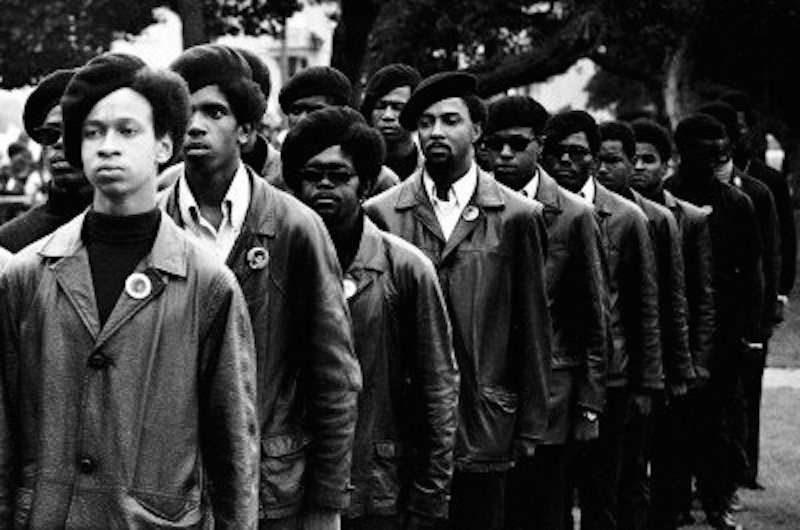
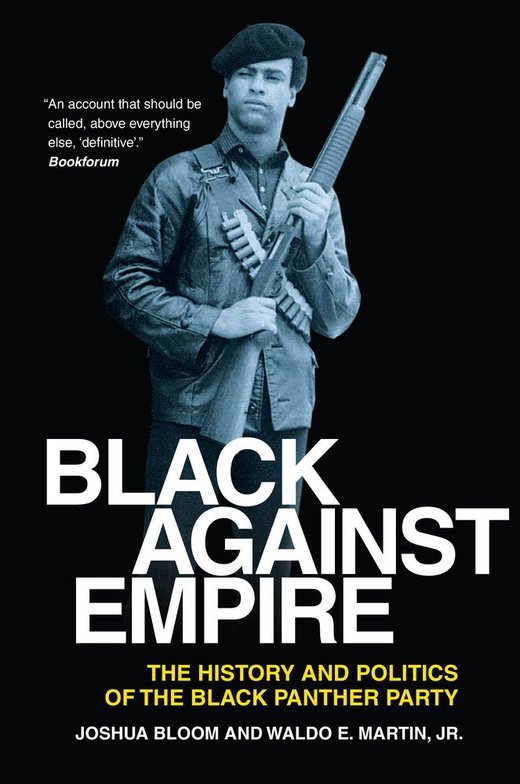
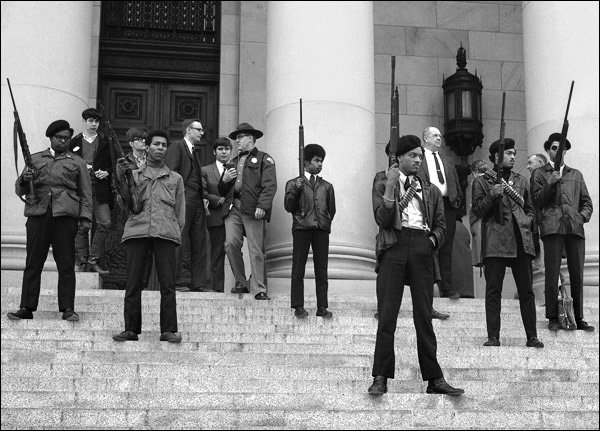
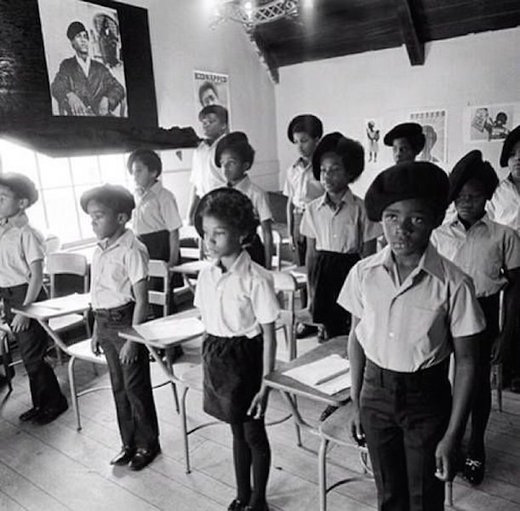
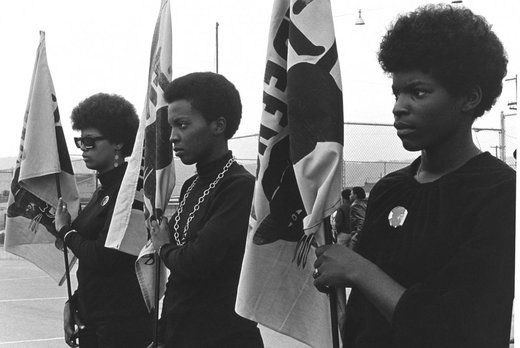
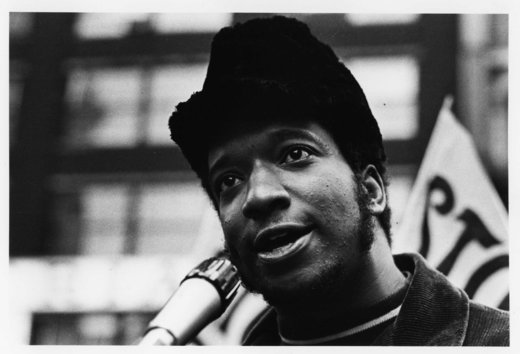
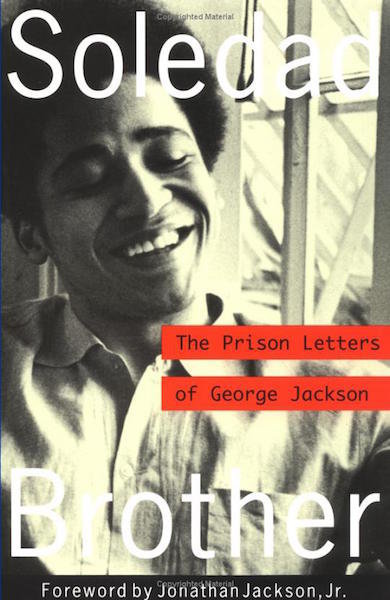
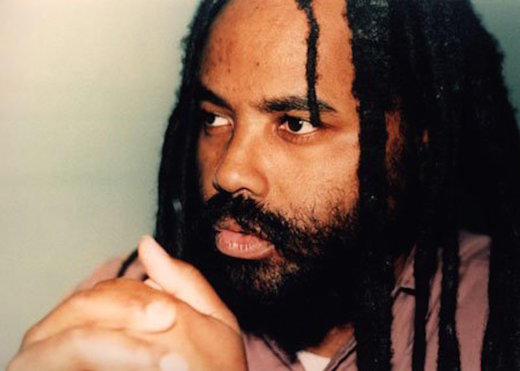



[Link]